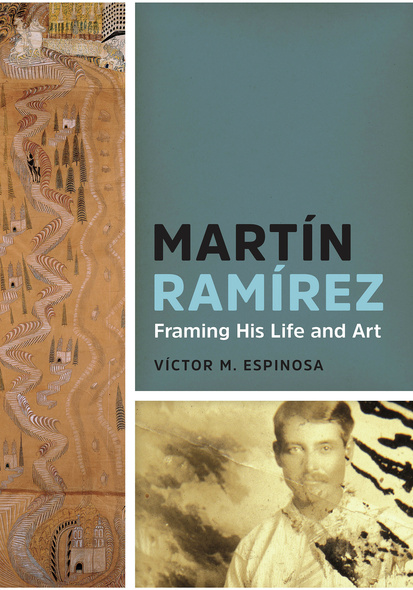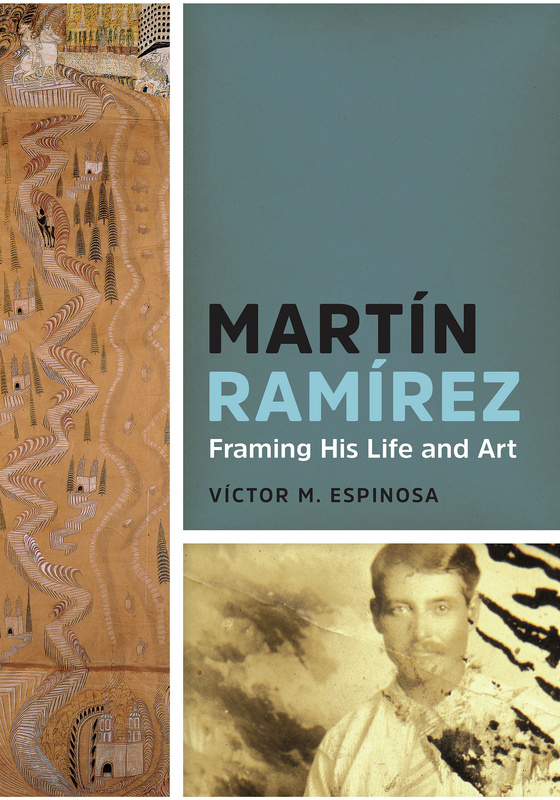Martín Ramírez, a Mexican migrant worker and psychiatric patient without formal artistic training, has been hailed by leading New York art critics as one of the twentieth century’s greatest artists. His work has been exhibited alongside masters such as José Clemente Orozco, Diego Rivera, Rufino Tamayo, Salvador Dalí, Marc Chagall, Paul Klee, and Joan Miró. A landmark exhibition of Ramírez’s work at the American Folk Art Museum in 2007 broke attendance records and garnered praise from major media, including the New York Times, New Yorker, and Village Voice.
Martín Ramírez offers the first sustained look at the life and critical reception of this acclaimed artist. Víctor Espinosa challenges the stereotype of outsider art as an indecipherable enigma by delving into Ramírez’s biography and showing how he transformed memories of his life in Mexico, as well as his experiences of displacement and seclusion in the United States, into powerful works of art. Espinosa then traces the reception of Ramírez’s work, from its first anonymous showings in the 1950s to contemporary exhibitions and individual works that have sold for as much as a half-million dollars. This eloquently told story reveals how Ramírez’s three-decades-long incarceration in California psychiatric institutions and his classification as “chronic paranoid schizophrenic” stigmatized yet also protected what his hands produced. Stripping off the labels “psychotic artist” and “outsider master,” Martín Ramírez demonstrates that his drawings are not passive manifestations of mental illness. Although he drew while confined as a psychiatric patient, the formal elements and content of Ramírez’s artwork are shaped by his experiences of cultural and physical displacement.
Elegant in both prose and argument, Espinosa’s book untangles Ramírez’s work from the conditions within which it has been defined in order to celebrate the radical complexities of the artist’s aesthetics and the power of recognizing him as 'an example of resistance, survival, and artistic agency from the perspective of a subaltern subjectivity.'
Intellectually rigorous and deeply moving . . . As Espinosa tracks the path of Ramírez’s work out into the art world in this meticulous, corrective, and humanizing portrait of a remarkably persevering artist, he raises disquieting questions about immigration, race, mental illness, creativity, and how we categorize and value art.
Víctor Espinosa’s passion for Martín Ramírez—his life and his art—has led to this illuminating volume. Espinosa details new biographical information about this important twentieth-century artist, and introduces previously unknown participants in the artist’s story, particularly during the time of his stay in Auburn, California. For anyone interested in American art, this is an essential read.
Martín Ramírez is an important and much-needed work in the messy, at times superficial, and often contradictory field of ‘outsider’ art. There are actually very few knowledgeable, serious, and sensitive works assessing the whole field or a particular artist. With both considerable knowledge and passion, Víctor Espinosa fervently tells the story of Martín Ramírez and his role in the making of the outsider myth in all of its poignant and pathetic glory. This book will take its place as one of the handful of truly important works in the outsider field.
One of the foremost experts on Martín Ramírez and an authority on transnational migration and art, Espinosa holds a PhD in sociology from Northwestern University and currently teaches at the Ohio State University. He is the author of El dilema del retorno: Migración, género y pertenencia en un contexto transnacional.
- Acknowledgments
- Introduction
- 1. Introducing Martín Ramírez: A Transnational Migrant Worker from Los Altos de Jalisco
- 2. "Disoriented in Mind": Ramírez's Involuntary Seclusion
- 3. Art inside a Total Institution
- 4. A Psychotic Artist or the Mexican Henri Rousseau?
- 5. Marketing and Constructing the Reputation of an Outsider Master
- 6. The Enigma of Martín Ramírez
- Notes
- Index








